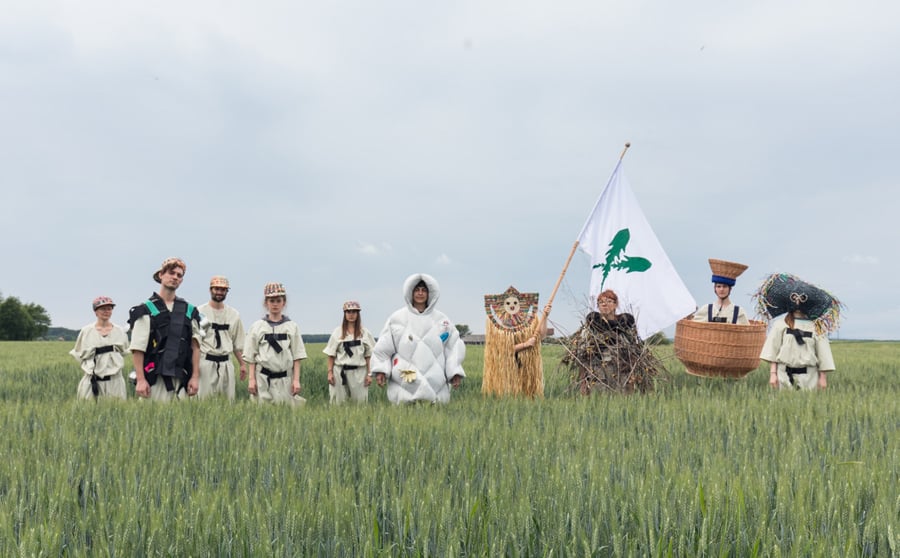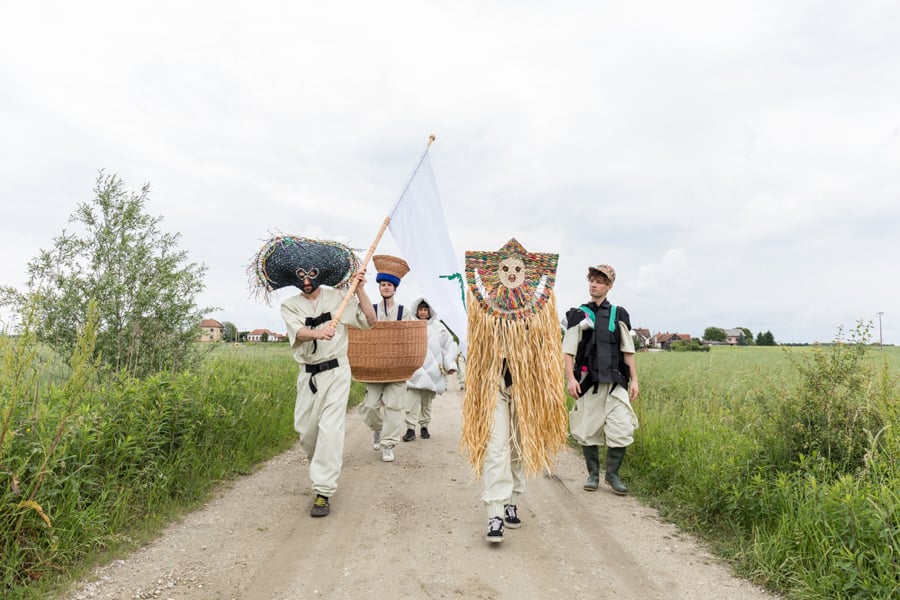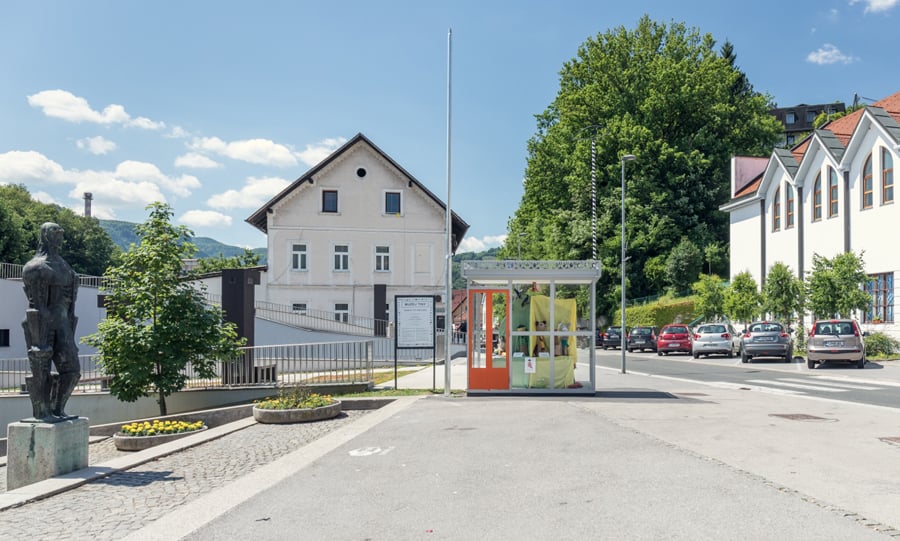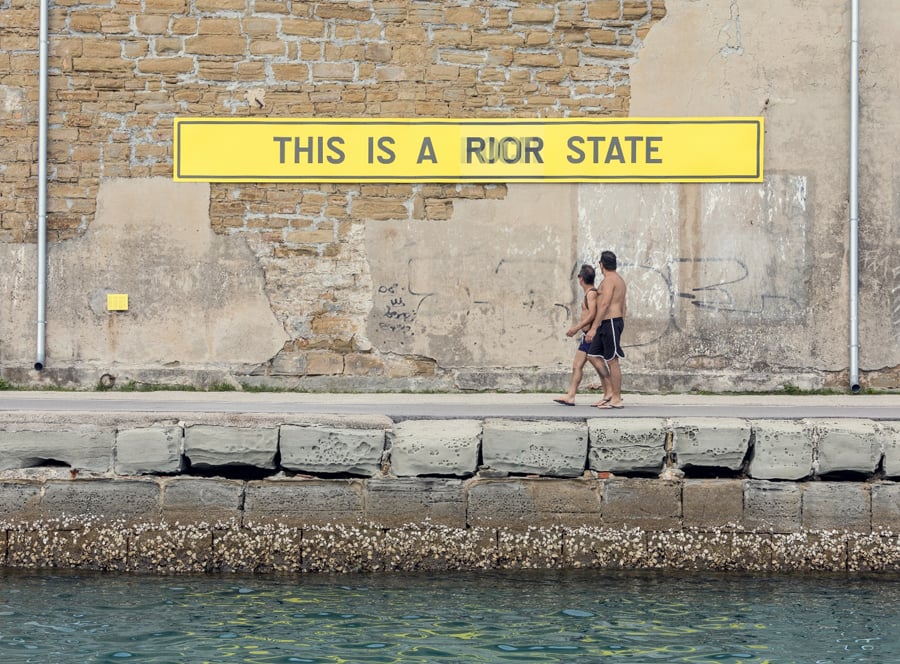
August 16, 2017
At BIO 25, Design Mends Political and Cultural Divisions
The latest iteration of BIO, Ljubljana’s design biennale, aims at the full socialization of design and miraculously succeeds.

What good is a biennale? It’s an increasingly urgent question across the art and design worlds as a palpable biennale fatigue sets in. It afflicts both practitioners—who take on paltry commissions in disparate locations with vague promises of prestige—and critics, who out of a deep fear of missing out feel compelled to board more and more low-cost flights to keep tabs on the next big thing.
The reason for biennales’ proliferation seems commonsensical in a way that is already dated. It’s premised on that early-millennial rhetoric of “creative cities,” first propounded by Richard Florida and then regurgitated en masse by civic officials the world over: the idea that local economies will succeed only by building up creative capital, attracting smart people, and, through a certain magical alchemy, creating innovative things. And so cities as far-flung as Shenzhen, Istanbul, and Seoul are now all competing for our attention, through architecture and design biennales in different guises.
Meanwhile, in the unsung city of Ljubljana, Slovenia, an entirely different approach is being taken. In a curious twist of history, Ljubljana happens to host Europe’s oldest design biennale. Called BIO, it was founded in 1963 to promote consumption of Yugoslavian products, operating as a fairly standard industrial design showcase for most of its existence. It was only in 2014 that the biennale’s host institution, MAO, repositioned the event as a live experiment in which different stakeholders would be brought together to explore design’s potential to instigate positive change in its broadest sense. The first renewed version tasked teams of designers from across Europe with working on various projects that investigated local Slovenian conditions. The results were understandably messy, sometimes surprising, but on the whole it was a valiant effort at testing out new ways for a biennale to operate.
Undaunted and seeing potential in that approach, curators Angela Rui and Maja Vardjan of MAO repeated it this year for Faraway, So Close, BIO’s 25th edition. The duo kept the principle of participation, but expanded it to several different sites and a whole set of public actors and organizations across Slovenia. They contended that the Slovenian countryside—the small nation’s most prominent feature—could be a prime testing ground for understanding the changes taking place outside cities. An overwhelming emphasis on urbanization in recent years has missed out on the equally substantial transformations taking place in nonurban areas. For instance, more and more Europeans are leaving cities to settle in rural locales, and for Rui and Vardjan, that resettlement has the potential to reinvigorate and redefine those areas and their surrounding landscapes.
The disparate sites, which take you to the coast, mountains, forests, caves, and plains, present the problem of where you show your projects. For this, the curators followed a two-pronged approach. Each design team would create interventions for a smattering of locales while also preparing a display at MAO in Ljubljana, so that a visitor could get a wide overview there of the various projects without having to zigzag through the entire country. The site-specific installations easily act as stand-alone projects. Because they are associated with other tourist and leisure activities, such as hiking or cave spotting, they can be seen by people who might not have set out to visit a design biennale in the first place.
A good case in point is Occupying Woods, by French designer Matali Crasset. The project is set, pointedly, in the heavily forested area of Kočevje. The design team points out that woodlands cover an astonishing 62 percent of Slovenia, and that figure is expected to rise as abandoned farmland is eventually rewilded. Crasset’s own intervention is remarkably modest: a simple stove alongside a forest path. Lined with ceramic tiles and featuring built-in seating, it draws on the sociability of the classic hearth, yet moves this typically interior motif to the outdoors—a new meeting place, where people can bake bread, drink tea, and gather for the local wood festival.
Slovenia is also famous for its thousands of karst caves. For Underground Release, Amsterdam-based Studio Formafantasma explored the tensions of this landscape between geological time (the millennia needed to form such terrain) and the speed of resource extraction, which quickly depletes raw materials from the earth. In its display at MAO, Formafantasma created a tapestry of limestone tiles and products in order to show how value is extracted from these geological systems. Meanwhile, in the Županova Jama cave, Dan Adlešič put on a surreal light show with a narration about extraction, sound, vibration, light, and human rationalization.
In the former coal mining town of Trbovlje, which has the surprising cultural legacy of being the hometown of both the prog-rock band Laibach and modern-dance choreographer Iztok Kovač, Greek architects Point Supreme and their team staged After Utopia. It’s a collection of projects that look at the town’s cultural, economic, and social assets, attempting to defy easy stereotypes about postindustrial malaise by celebrating the personal and social achievements of its inhabitants. A small glass pavilion called the Tiny Museum, designed by Point Supreme, has been placed in the center of town and is intended to be a rotating showcase of local creativity.
In these projects, there is often an eventual divvying up of individual projects to manage work flow and to let team members make their own personal contributions. The art of collaboration in this scenario is making these works add up to a sensible whole. This is probably best achieved in Countryside Reloaded, a dynamic project by Austrian designers Mischer’Traxler Studio set on the eastern edge of Slovenia where the plains of the Pannonian Basin begin, a landscape that stretches across much of southeast Europe. Here, the design team stages an agricultural parade through a farm field. Lucia Massari and Nina Mršnik have created fantastical costumes to represent different phases of the harvest, and the designers have laid out a route with several stations designed to inform you about food production today. The tour culminates at an abandoned supermarket, retrofitted as a kitchen and dining room, where an experimental restaurant will invite diners to think about the region’s foods. Looking at the generic industry that global food production has become, the project seeks to reinfuse the land with local character, celebrating the specificities of the region.
Projects like these shed light on the way biennales might operate in the future. By shifting the emphasis from products to process, BIO above all shows how such events can be useful for disrupting the rituals of everyday life, fostering situations in which people from vastly different backgrounds are compelled to communicate and engage with each other, to share experiences, to find common ground, and to create something new. If that sounds too “snowflake” for today’s reality, consider how much our political divisions of late have arisen from an increasing chasm between urban so-called elites and rural and working-class people. Designers are guilty of being just as detached as anyone else.
So what good is a biennale? Faraway, So Close, in its own humble way, acts as a hand reaching across those dividing lines. And if that’s what a biennale can really do, then let’s see more of them and not less.
Faraway, So Close, is open through October 29 at MAO in Ljubljana, Slovenia.
If you liked this article, you may also enjoy “The Enduring Lives of Sasa Machtig’s Modular Creations.”
Recent Viewpoints
Viewpoints
Google’s Ivy Ross Makes Sense of Color












